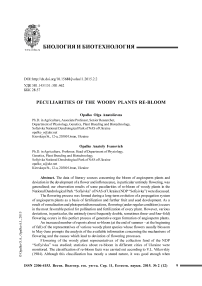Peculiarities of the woody plants re-bloom
Автор: Opalko Olga Anatolievna, Opalko Anatoly Ivanovich
Журнал: Природные системы и ресурсы @ns-jvolsu
Рубрика: Биология и биотехнология
Статья в выпуске: 2 (12), 2015 года.
Бесплатный доступ
The data of literary sources concerning the bloom of angiosperm plants and deviation in the development of a flower and inflorescence, in particular untimely flowering, was generalized; our observation results of some peculiarities of re-bloom of woody plants in the National Dendrological Park "Sofiyivka" of NAS of Ukraine (NDP "Sofiyivka") were discussed. The flowering process was formed during a long-term evolution of a propagation system of angiosperm plants as a basis of fertilization and further fruit and seed development. As a result of vernalization and photoperiodism reactions, flowering (under regular conditions) occurs in the most favorable period for pollination and fertilization of every plant. However, various deviations, in particular, the untimely (most frequently double, sometimes three- and four-fold) flowering occurs in this perfect process of generative organ formation of angiosperm plants. An increased number of reports about re-bloom (at the end of summer - at the beginning of fall) of the representatives of various woody plant species whose flowers usually blossom in May-June prompts the analysis of the available information concerning the mechanisms of flowering and the causes which lead to deviation of flowering processes. Flowering of the woody plant representatives of the collection fund of the NDP "Sofiyivka" was studied; statistics about re-bloom in different cities of Ukraine were monitored. The classification of re-bloom facts was carried out according to V.L. Vitkovskiy (1984). Although this classification has mostly a stated nature, it was good enough when being formulated and, with certain conditions, it can be applied nowadays. Accordingly, using this classification, abnormal cases can include facts of early summer-fall flowering and early winter flowering. A late spring flowering can be adaptive response of damaged plants to exogenous stresses, due to which the probability of sexual propagation remains. Early spring-early summer flowering is a dual-natured category which, under certain conditions, may have adaptive meaning and facilitate seminal propagation. Most cases of untimely flowering registered in NDP "Sofiyivka" represent a group of early summer-fall flowering, in some cases late spring flowering occurred though. Secondary flowering is usually connected with meteorological peculiarities of the year. Most frequently it is seen in very dry years, first of all, after hot and dry spring. The rebloom can have an adaptive nature in case of development seeds with full germination, moreover the immature germs of underdeveloped seeds formed from the flowers of early summer-fall flowering can be used in breeding programs.
Dichogamy, fasciation, florigen, heterostyly, hermaphrodite plants, intercalary meristems, protandry, protogyny, sexual polymorphism
Короткий адрес: https://sciup.org/14967465
IDR: 14967465 | УДК: 581.145/151: | DOI: 10.15688/jvolsu11.2015.2.2
Текст научной статьи Peculiarities of the woody plants re-bloom
DOI:
Understanding the processes of sexual reproduction, namely the manifestation of sex, and first of all sexual di- and polymorphism of the plants, has always been of interest for tillers since Ancient Egypt times, where along with many androgynous plants such dioecious plants as date palm ( Phoenix dactylifera L.), fig ( Ficus carica L.), ricin ( Ricinus communis L.), asparagus ( Asparagus officinalis L.) and others were grown. In the course of a century-long research of the peculiarities connected with sexual differentiation of higher plants at various organization stages (a flower, an individual, a population, a species), numerous mechanisms, which ensure a timely beginning of a sexual process, the organ of which in angiosperm plants is a flower, were identified [2; 7; 23]. Among the most outstanding achievements made by the scientists from different countries from the times of Ch. Darwin [30], it is worth mentioning the description of the course of sexual differentiation and flowering itself, the identification of geographic localization and systematic belonging of the plants of various sexual forms [28; 31; 33; 38; 43], the explanation of flowering hormone – florigen – made by M.Kh. Chailakhian in 1936 [22; 24], and the identification of material carriers and the conditions of gene expression (XXI century), under their control this hormonal complex is synthesized and transported [16; 32; 40; 41; 44].
Very complicated and multivariate flowering process was formed during the evolution of a propagation system of angiosperm plants as a basis of fertilization and further fruit and seed development, as a basis of sexual plant propagation. As a result of vernalization and photoperiodism reactions, which were also developed during a long-term evolution, flowering (under regular conditions) occurs in the most favorable period for pollination and fertilization of every plant [8; 12; 13; 22; 24; 37]. It concerns not only a certain period of the season, but also certain hours of the day. However, various deviations, malformation of a flower and inflorescence, fasciation, the formation of additional petals, heterostyly, untimely (most frequently double, sometimes three- and four-fold) flowering occur in this perfect process of generative organ formation of angiosperm plants.
The phenomenon of untimely flowering was described by many researchers [5; 6; 9; 11; 14; 19; 21; 27; 32; 44]. The connection between untimely flowering and stressful environmental conditions in which plants develop was discussed, namely, re-growth and re-bloom of the plants in the ashes [11], re-bloom of early fruitful walnuts – Juglans regia L. [18], cytomorphological features of re-bloom flowers Cerasus vulgaris Mill., in particular, sour cherry, sour cherry-sweet cherry and sour cherry-chokecherry hybrids and perspectives of their use in sour cherry breeding [26]. Other cases of re-bloom were described: white mulberry – Morus alba L. [3], species of micro sour cherry – Microcerasus Webb. Emend Spach. [17], cotoneasters – Cotoneaster Medik. [1] and various exotic species [14], features of germ seeds of cherry plum – Prunus cerasifera Ehrh., received from re-bloom [10].
Alongside with this, an increased number of reports about re-bloom (at the end of summer-at the beginning of fall) of the representatives of various woody plant species whose flowers usually blossom in May-June prompts the analysis of the available information concerning the mechanisms of flowering and the causes which lead to deviation of flowering processes.
Materials and Methodology
Flowering of the woody plant representatives of a collection fund of the National dendrological park “Sofiyivka” of Ukraine’s NAS (NDP “Sofiyivka”) was studied; the statistics about re-bloom in different cities of Ukraine was monitored. While summing up the available information, special attention was paid to the data received from observation analysis, made in different years by the researchers from different scientific schools, concerning induction mechanisms of generative organ development and a feasibility to regulate higher plant flowering [1; 3–5; 9–11; 14; 17–19; 21; 26; 27; 31–33; 36; 44]. The classification of re-bloom facts was carried out according to V.L. Vitkovskiy [4].
Results and discussion
The angiosperm diversity, variation in floral structure, as well as micro- and macrosporogenesis processes, pollination, fertilization, embryo and fruit formation, were shaped under age-long evolutional pressing [8; 25]. According to the ability to be fertilized with own pollen and that of another genotype autogamous (selfpollinated) and allogamous plants (crosspollinated) are classified. Self-pollinated plants are considered to be originated from cross-pollinated wild species resulting from multiple subconscious limitations of cross-pollination and subconscious artificial selection. Which is why, a number of selfpollinated plants are smaller comparing to that of cross-pollinated ones [20; 23]. It was Ch. Darwin (1876) who paid attention to numerous diversity of biological mechanisms which facilitated crosspollination [30]. At present, many morpho-physiological and genetic mechanisms which favor allogamy (cross-pollination) are known. They are heterostyly and dichogamy (protandry and protogyny) in hermaphrodite plants, and metagyny and metandry in dioecious plants, various forms of self-incompatibility, selective fertilization, etc.
The most reliable mechanism of blocking self-pollination and favoring cross-pollination is separation of female and male generative organs and their formation on various plants (on separate male (staminate) or female (pistillate) individuals) or at a certain distance on the same plant. Such plants as date palm, dioecious hemp, spinach, hop, buckthorn, some nuciferous plants, etc. develop female and male flowers on different individuals. This is the reason why they are called dioecious plants. Male and female flowers of monoecious plants are located on the same plant but at some distance; corn, water melon, cucumbers, coco palm, walnut, hazelnut and other crops are the examples. The number of monoecious plants is large: 10 % of all mono- and 4 % of all dicotyledonous plants.
Most of the plants have bisexual flowers. However, they have many other possibilities to prevent self-fertilization. It is protandry, when pollen matures faster than stigma pistil is able to accept it, and also protogyny, when anthers mature with delay after fertilization is done with another plant’s pollen. Protandry occurs quite frequently, including beets, sunflower, lettuce, parsley, celery. Protogyny is characteristic of cabbage plants, many grain cereals and other species. Protogyny is meaningless for many fruit crops – apples, pears, plums, etc. – because self-fertilization is unlikely to happen due to numerous genetic and physiological mechanisms of self-incompatibility.
In view of the development of Darwin’s ideas, contemporary researchers study peculiar aspects of a flower structure, quality, quantity and ways of pollen transfer and fertilization, a degree of self- and cross-incompatibility, the effect of inbreeding, a share of cross-fertilization for selfpollinated plants and that of self-fertilization for cross-pollinated plants, etc. [20]. Flowers, pollinated by insects, attract them by means of nectar and pollen (sources of ambrosia), smell and a wide diversity of colors. Flowers of many plants gain the strongest aroma exactly at the time when insects which pollinate them fly very actively. It is a known fact that flowers of petunia, honeysuckle, pelargonium and other plants, pollinated by night butterflies, begin to smell most of all in the evening, whereas the flowers, pollinated by bees and other day insects, almost stop releasing aroma at sunset. The color of some flowers attracts certain insect species. Bees fly to blue and violet flowers first of all, whereas night butterflies – to white and straw-colored ones. A flower shape of some orchids resembles a female of insect-pollinators; this attracts male-pollinators (pollination of such orchids occurs before femaleinsects, which could “compete” with flowers for males’ attention, appear).
In 1936, after a set of experiments on photoperiodic regulation of flowering had been carried out, M. Kh. Chailakhian suggested the existence of a natural complex of hormones, which stimulated flowering of the plants and called it florigen. Physiologically active substances, which stimulate flowering, are formed in leaves under favorable conditions (optimal air temperature and proper duration of daylight hours). They come through plant tissues from leaves into buds and initiate flower formation. Plant grafting trials prove that florigen moves from a flowering plant-donor to a vegetating plant-receptor facilitating the flowering of the latter. The same trials show that florigen does not have species specificity: it initiates flowering of various plant species and photo periodical groups [24].
It has been found out that gibberellin treatment initiates flowering of long-day plants, which experience lack of this phytohormone, however it does not affect that of short-day ones. Instead, grafting/inoculation of plants with different need in photoperiod facilitates flowering of both [24]. To speed up fruiting resulted from grafting of cuttings with juvenile seedlings of perennial trees has always been a common practice among fruit breeders aimed at faster fruit quality evaluation of newly developed hybrids [20; 21]. Other ways of reducing a juvenile development stage of hybrid seedlings were found with help of empiric methods [42], but molecular mechanisms of flowering time regulation were determined/revealed after long-term fundamental research of Swedish scientists headed by professor Ove Nilsson [36] on model genetic object Arabidopsis thaliana (L.) Heynh. only in the year of 2005 [41]. In 2007, Ove Nilsson received prestigious Marcus Wallenberg award for the confirmation of the feasibility to use principles, discovered on Arabidopsis, for flower time regulation of perennial woody plants. Numerous manipulations of transgenesis of FT gene from A. thaliana to Populus L. Gene were made for this purpose. FT gene functioned ectopically, which made it possible to speed up the course of plant juvenile development stage, and in turn their fruiting period [21].
In natural conditions flowering of most temperate climate pants begins at air temperature 10–12 °С. Its beginning as well as budding takes place due to reserve nutritive substances in a trunk, branches, leading roots, and it unlikely depends on root system functioning itself. Most frequently at 13 °С flowering lasts for 10–12 days (day and night) and in dry weather at 20–25 °С – only 5–6 days. In rainy weather at temperature, lower than 12 °С it may last up to 15 days and longer, whereas in sunny weather at 30–32 °С flowering lasts only 3–4 days [15].
Generative buds, which originate inflorescence and flowers, are developed at various terms. Some plants start budding in spring of the same vegetative period when a plant blossoms, others – in the year which precedes flowering, usually in the second half of summer [21; 37]. Woody plants start budding (according to plant species, cultivation zone and farm practices) in June-August of a previous year [4; 13]. The beginning of flower bud differentiation is very close to the moment when shoots cease their growth. This period is characterized by fast increase of tissue carbohydrate concentration, dry and hot weather accelerating this process [29; 34; 35; 39]. The beginning of bud formation can change for a ten-day period or more depending on meteorological conditions, species/ cultivar structure of orchards, the age and physiological condition of a plant [15]. Excessive irrigation may cause a delay in fruit bud differentiation terms [29; 39]. Trees with abundant yield budding starts later compared with unfruitful trees: cherry and plum trees start budding later than apple trees; budding starts later in wet years versus dry ones [15].
At first vegetative buds start to develop – germination of a stem and leaves develops from meristem tissues on a cone top of outgrowth. Then generative meristem appears, swelling on a cone top of outgrowth, later flower protrusions distinguish – first conception of flowers. Further, in the process of differentiation, receptacle develops by winter, and perianth forms on it – sepals and petals, anthers and carpels develop, fruit receptacles and seminal beginnings, pollen and germinal vesicles, and in spring gametes develop [15; 21].
In natural conditions of a temperate zone, usually a process of flower formation of fruit plants lasts up to 250–300 days, covering summerfall and winter-early spring periods [4]. For apices of vegetative buds to differentiate intro generative ones, certain internal conditions, both in meristem tissues of cone outgrowth and in the branches they are located on, are required. First of all, such conditions are created when shoot growth weakens which is due to a considerable increase of the concentration and activity of growth inhibitors.
Development or intensification of specific enzymes and phytohormones takes place during this process, in particular flowering hormone, which activate generative development genes, which in turn, results in initiation and differentiation of flower buds. However, a proper course of metabolism is necessary for this process – active synthesis of specific DNA, RNA, protein, carbohydrates and due supply with nitrogen, phosphorus, microelements, water, etc. These special conditions are required for the first stage of flower development (flower budding), conditions similar to the growth of vegetative organs are necessary for the second stage (differentiation). Most frequently, differentiation of flower buds in pommes fruit plants (apple-, pear trees) begins in the period of intensive fruit growth. Flower buds develop poorly or do not develop at all on the trees with heavy flowering and abundant yield, which explains irregularity (periodicity) of fruiting. As to stone fruit plants, except for late-yielding cultivars of plum and peach, processes of generative budding and active fruit growth do not coincide in time – flower bud differentiation often begins when fruit growth is almost over. Hence, necessary internal physiological-biochemical conditions are created for generative budding and for regular fruiting as well [15].
All above-mentioned and other processes of plant growth and development take place under the control of due genes, but manifestation rate of every gene in phenotype is due to many exogenous and endogenous factors. In the process of making genetic potential of individual a features of environmental condition, the development of any feature or property can be modified very much, namely, the formation of generative organs. Endogenous effects, consisting in the interaction of a gene studied with other genes of core and cytoplasm, which can hinder or enhance its manifestation in phenotype, are of great importance. Complementarities and epystasis can inhibit expression of even dominant genes, and for recessive gene to develop, besides releasing a complex of endogenous interactions, it should be transformed into homozygote condition [20; 21]. All deviations concerning flower gene expression in phenotype, as well as any gene, take place within an evolutionally formed principle of response and have an adaptive meaning. However, if environmental fluctuations go beyond phylo-genetic bounds, i. e. they acquire stressful nature, some inadequate changes may occur which make a genotype adaptive potential worse. Fasciation and other abnormalities of generative organ development, in particular untimely flowering, belong to such non-standard, mostly non-adaptive, changes. Most of the described cases of untimely flowering are unproductive, as very often fruits which may set during this time [4; 8; 17] are small as a rule [18], they neither ripen nor form good seeds; even if they do, to stimulate embryo development and seedling survival, scientists (in breeding-genetic trials) use special techniques [10; 26], including in vitro methods [21].
First news from European botanists about untimely flowering of plants dates back to XV century [5]. Later, one could find more and more information about the appearance of flowers on fruit plants in late spring, summer, fall and even in winter time, when the term for regular spring flowering passed long ago (or it did not begin). According to V.L. Vytkovskiy, this interesting phenomenon was observed in many areas of a temperate zone. For instance, the facts of berry plant re-bloom on the territory of former Russia were described in the mid-XIX century, but multiple plant flowering aroused more interest in XX century [4].
Because of cumulative effect of irregular natural and anthropogenic factors in Ukraine, as well as in the whole world, abnormal climate changes take place; so, fluctuations of environmental parameters, especially an urbanized one, in which plants develop, go beyond evolutionally formed standards of response; the latter is one of the factors of re-bloom.
In October, 2004 horse chestnut tree blossomed for the second time in Lviv, Kyiv, Ivano-Frankivsk, Uzhhorod, Vinnytsia and Ternopil. In July 2005 apple-trees in Kirovohrad showed re-bloom, at the beginning of September, 2006 horse chestnut blossomed in the downtown of Donetsk. In the year of 2007 re-bloom was registered on lilac – near Yalta, linden trees – in Odesa, apple-, cherry-trees, horse chestnuts – in Rivne area. In 2008 horse chestnuts started to blossom again in the mid-September in Odesa and Kyiv, at the beginning of October 2009 – in the Carpathian area, at the beginning of September 2012 – in Cherkassy and Poltava, in the first decade of October the same year – in Lviv and Ternopil. Along with horse chestnut moth spreading, September-October bloom of horse chestnuts became typical for damaged plants. At the end of June and the beginning of July 2013 rowan trees Sorbus aucuparia L. and its form S. aucuparia ‘Pendula’ blossomed on Uman streets and at the end of July and the beginning of August, 2014 elderberry Sambucus nigra L. and black locust Robinia pseudoacacia L. showed the same phenomenon. In 2014 re-bloom was observed on cherry trees which damaged by cocomycosis ( Coccomyces hiemales Higg.) lost their leaves in the mid-summer, but after partial leaf appearance they managed to develop few flowers.
As far as this phenomenon is concerned, plants of NDP “Sofiyivka” were no exception. At the beginning of September 2007 re-bloom was seen on blackthorn bushes – Prunus spinosa L. (Fig. 1), on two wild apple species: Malus baccata (L.) Borkh. (Fig. 2) and M. pallasiana Juz. (Fig. 3), and in the third decade of September pyramidal inflorescences of horse chestnuts – Aesculus hippocastanum L. appeared on branches with nuts and dried leaves damaged by horse chestnut leaf miner – Cameraria ohridella Deschka and Dimić (Fig. 4). Besides, in September flowers of young seedlings of M. spectabilis (Ait.) Borkh. burst into blossom, and it was its first bloom. Cases of re-bloom occurred rarely in the following years.
However, in the fall of 2007 some plants – Cerasus vulgaris Mill. had re-bloom. Besides plants of this species experienced re-bloom in the fall in 2009–2011; Sorbus torminalis (L.) Crantz – in the years of 2010–2012. Some trees – Aesculus hippocastanum L. showed re-bloom in 2010–2012. A young tree – Sorbus aucuparia L. ‘Fastigiata’ first blossomed in May, 2009, and in September the same year flowers burst into blossom (Fig. 5). Double flowering of this young tree was seen in 2010–2012.
Based on the classification of V.L. Vytkovskiy [4], all cases of re-bloom can be classified into four groups:
– late spring flowering which occurs 10– 15 days after main spring flowering. In these cases
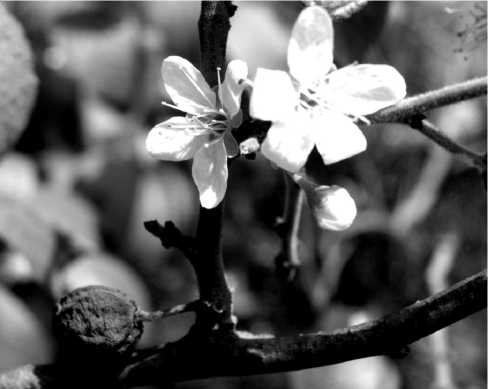
Fig. 1. Early summer-fall flowering of blackthorn (NDP “Sofiyivka”, September 4, 2007)
flowers of re-bloom develop from buds, set in a summer-fall period of the previous year along with standard flower buds, but for some reason their development slowed down and they burst later than other flowers of the same tree;
– early spring-early summer flowering is observed at the ends of new shoots about 3–4 weeks after first (main) flowering. Re-bloom flowers of the plants that belong to this group develop rapidly due to the differentiation of outgrowth axillary cones, which set in the previous year and had enough time to accomplish their development cycle during fall-winter-spring period. Such abnormalities can be caused by excessive nutrition in a previous year as well as different damages of shoots, namely winter ones, and delay in apical bud growth. As a result, only some flowers, which avoided damage, burst into blossom during main (spring) flowering. By contrast, re-bloom may be quite plentiful. The intercalary shoot growth from flower buds with apical flower location on each of them precedes in some genotypes;
– early summer-fall flowering results from accelerated flower formation in summerfall period of a current year. This is the most common abnormality. Similar to regular development flowers develop from apical, i.e. former axillary, cones of outgrowth which have already finished their development in the previous year. So there is no need in lower temperatures. On the contrary, the development process of such flowers goes more actively than at higher (not high) temperatures;
– early winter flowering starts at sharp increase of the temperature in winter when
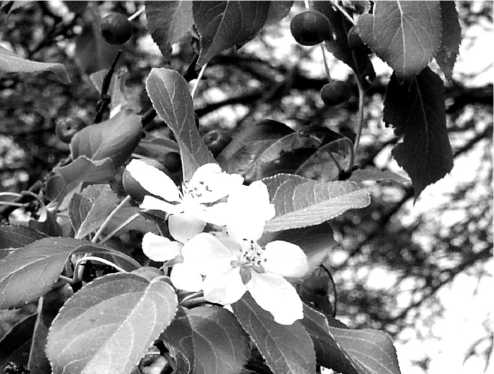
Fig. 2. Early summer-fall flowering of M. baccata (L.) Borkh. (NDP “Sofiyivka”, September 6, 2007)
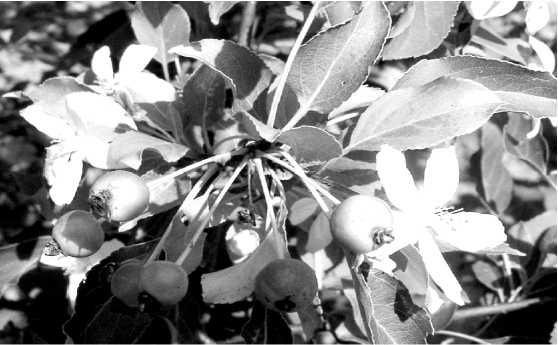
Fig. 3. Early summer-fall flowering of M. pallasiana Juz. (NDP “Sofiyivka”, September 6, 2007)
natural bud dormancy is over. Flowers formed in summer-fall period burst into blossom, they normally differentiate from the cells of outgrowth apical cones, which finish their development cycle earlier. Under regular conditions flowers have to start blossoming in spring, but abnormal warming (spring imitation) provokes untimely flowering.
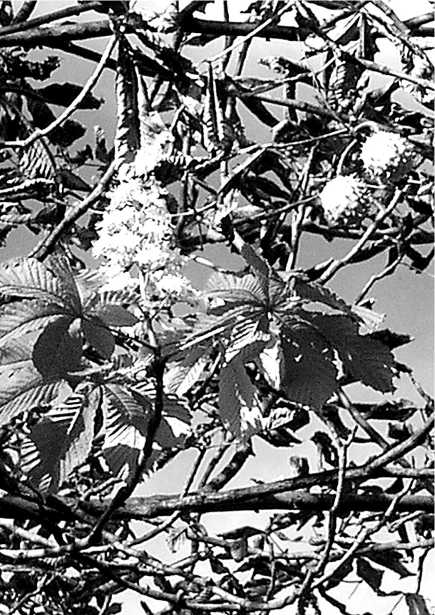
Fig. 4. Early summer-fall flowering of Aesculus hippocastanum L. (NDP “Sofiyivka”, September 26, 2007)
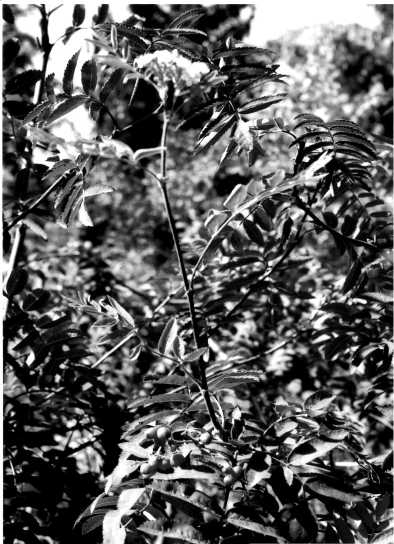
Fig. 5. Early summer-fall flowering of Sorbus aucuparia L. ‘Fastigiata’(NDP “Sofiyivka”, September 17, 2009)
Although the classification suggested by V.L. Vitkovskiy [4] has mostly a stated nature, it was good enough when being formulated, and, with certain conditions, it can be applied nowadays. Accordingly, using this classification, abnormal cases can include facts of early summerfall flowering and early winter flowering. And late spring flowering can be adaptive response of damaged plants to exogenous stresses, due to which the feasibility of sexual propagation remains. Early spring-early summer flowering is a dual-natured category which, under certain conditions, may have adaptive meaning and facilitate seminal propagation.
Early winter flowering of entomophilous plants is abnormal in most cases, whereas it may be productive for wind-pollinated plants, e.g., representatives of Corylus L., in particular in the years with mild winters and/or in the regions with meteorological conditions similar to subtropical ones.
Apples, pears, plums, currants and many other plants in the years with early spring-early summer flowering from outgrowth axillary cones, resulted from intercalary growth for substitution of damaged apical flower buds, can develop shoots, and flowers of re-bloom are located on their apices. Intercalary shoot growth from flower buds is considered to be abnormal for the plants mentioned, but for raspberries, quince and some other plants it is intercalary meristem that ensures the growth of peduncles with inflorescences or separate flowers. This type of flowering and fruiting is described as normal for All-Saints’ cherry. It is also considered to be typical for rowan, hawthorn and some other crops [4].
Secondary flowering is usually connected with meteorological peculiarities of the year. Most frequently it is seen in very dry years, first of all after hot and dry spring. Drought during massive flowering of the trees reduces intensity of their flowering, and some nutritive substances mobilized in the previous season remain unused. Serious deficit of moisture leads to partial yellowing and falling of the leaves in summer and can cause early bud awakening on leafless shoots, which is a known fact. Similar effects are observed on horse chestnuts, damaged by chestnut moth, which lost most of their leaves in the mid-summer. However, heavy and long rains may also cause re-bloom, the procedure of rebloom after heavy rains corresponding to the sequence of regular flowering of these plants in spring.
Plants which do not develop inflorescences and flowers for the next year are more predisposed to re-bloom. Contrary to this, the plants, whose flower buds of the next year set in June and July, blossom again, despite the fact that their flowers fully developed in restoration buds, including not only perianth, but also stamen and pistil [12].
Re-bloom of the trees which blossom before leaf burst (hazel, maple, etc.) occurs rather rarely, but cherry-, apple- and other fruit trees experience re-bloom quite often [12]. Early yielding walnuts also have re-bloom [18].
Under abnormal cases of untimely flowering, when regular seeds are not guaranteed, the germination efficiency of inadequate seeds received from such flowering can be enhanced by cultivating immature germs in vitro .
Most cases of untimely flowering registered in NDP “Sofiyivka” belong to a group of early summer-fall flowering, some facts of late spring flowering occur though.
Explaining the phenomenon of untimely flowering in view of a plant response to exogenous stressful factors, the mentioned facts of late spring flowering can be considered as an adequate genotype response to unfavorable conditions which slow down a regular flower bud development. New flowers open soon after petal fall from the flowers of a normal flowering term (Fig. 6). Provided proper pollination takes place, such flowers develop full seeds which can be a source of natural propagation and can be used in breeding practice.
Early summer-fall flowering is connected with accelerated flower development as a response to stressful conditions which lead to shoot growth inhibition and differentiation enhancement of flower elements in buds. Quite often one can see flowers of re-bloom and fruits of more or less maturity on a plant (see Fig. 1–5).
Summer-fall flowering can have certain breeding importance, as flowers develop fully, they blossom well, have viable pollen and set fruits which ripen perfectly (especially in the south). Plants grown from such fruit seeds turn to be earlier maturing than initial cultivars.
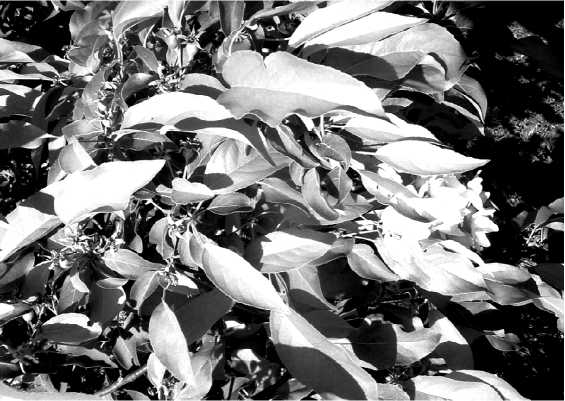
Fig. 6. Late spring flowering of Malus×prunifolia (Willd.) Borkh. var. Rinki (Koidz.) Rehd. f. fastigiatabifera (Dieck) Al. Teod. (NDP “Sofiyivka”, May 19, 2009)
Conclusion
Thus, the analysis of literary sources and our observation results give every ground to associate the phenomenon of numerous reports about the facts of untimely flowering of many woody plants with abnormal fluctuations of exogenous, in particular meteorological stressful conditions, which have been observed recently not only in Ukraine and are of global nature. Research of untimely flowering in the plants of species Aesculus , Cerasus , Malus , Prunus , Sorbus , carried out in NDP “Sofiyivka”, prove the occurrence of re-bloom which is classified as early summerfall flowering and also late spring flowering of M.× prunifolia .
Re-bloom may have an adaptive nature provided seeds with full germination are developed, but immature germs of underdeveloped seeds, formed from the flowers of early summer-fall flowering, can be used in breeding programs.
Acknowledgement
This material is partly based on the work supported by the National dendrological park “Sofiyivka” of NAS of Ukraine (№ 0112U002032) in compliance with thematic plan of the research work. We thank corresponding member of NAS of Ukraine DSc of Biology Ivan Kosenko for consultations and discussion.
Список литературы Peculiarities of the woody plants re-bloom
- Abdzhunusheva T.B. Assessment of the Diversity of Cotoneaster in a Botanical Garden Named After E. Gareeva of National Academy of Sciences of Kyrgyz Republic. The Herald of Kyrgyz National Agrarian University, 2011, no. 2 (20), pp. 46-48..
- Abe M., et al. FD, a bZIP Protein Mediating Signals From the Floral Pathway Integrator FT at the Shoot Apex. Science, 2005, vol. 309, no. 5737, pp. 1052-1056.
- Bassi D., Monet R. Botany and Taxonomy. Layne D.R., Bassi D., eds. The Peach: Botany, Production and Uses. Wallingford, CABI, 2008, pp. 1-36.
- Bilokin I.P. Growth and Development of Plants. Kyiv, Vysshaya shkola Publ., 1975. 432 p. (in Ukrainian).
- Buyanov M.F. The Secondary (Autumnal) Flowering and Fruiting of White Mulberry. Botanical Journal, 1956, vol. 41, no. 10, pp. 1102-1108..
- Case A.L., Barrett S.C.H. Environmental Stress and the Evolution of Dioecy: Wurmbea Dioica (Colchicaceae) in Western Australia. Evolutionary Ecology, 2004, vol. 18, no. 2, pp. 145-164.
- Chailakhyan M.Kh. Regulation of Flowering in Higher Plants. Moscow, Nauka Publ., 1988. 560 p..
- Chandler W.H. Fruit Growing. Boston, Houghton Mifflin, 1925. 794 p.
- Darwin C.R. The Effects of Cross and Self Fertilization in the Vegetable Kingdom. London, John Murray, 1876. 482 p. Fig. 6. Late spring flowering of Malus×prunifolia (Willd.) Borkh. var. Rinki (Koidz.) Rehd. f. fastigiatabifera (Dieck) Al. Teod. (NDP "Sofiyivka", May 19, 2009) БИОЛОГИЯ И БИОТЕХНОЛОГИЯ ISSN 2306-4153. Вестн. Волгогр. гос. ун-та. Сер. 11, Естеств. науки. 2015. № 2 (12) 19
- Delph L.F. Sexual Dimorphism in Gender Plasticity and Its Consequences for Breeding System Evolution. Evolution and Development, 2003, vol. 5, no. 1, pp. 34-39.
- Fedorov A.A., ed. Plant Life. In 6 vol. Vol. 5, part 1. Moscow, Prosveshchenie Publ., 1980. 430 p..
- Galakhov N.N. Secondary Flowering of Plants. Priroda, 1937, no. 1, pp. 25-28..
- Galushko R.V. On the Secondary Blooming of Woody Plants From Mediterranean Region in the Crimean Southern Coast. Bulletin of the State Nikitsky Botanical Garden, 1980, iss. 1 (41), pp. 19-25..
- Godin V.N. Sexual Polymorphism as the Factor of Adaptation Pentaphylloides fruticosa (L.) O. Schwarz in the Altai-Sayan Mountain. Dr. biol. sci. diss. Novosibirsk, 2009. 447 p..
- Golonka A.M., Sakai A.K., Weller S.G. Wind Pollination, Sexual Dimorphism, and Changes in Floral Traits of Schiedea (Caryophyllaceae). American Journal of Botany, 2005, vol. 92, no. 9, pp. 1492-1502.
- Heide O.M. Interaction of Photoperiod and Temperature in the Control of Growth and Dormancy of Prunus Apecies. Scientia Horticulturae, 2008, vol. 115, no. 3, pp. 309-314.
- Huang T., et al. The mRNA of the Arabidopsis Gene FT Moves From Leaf to Shoot Apex and Induces Flowering. Science, 2005, vol. 309, no. 5741, pp. 1694-1696.
- Ivashin D.S. On the Re-Growth and Secondary Flowering of Plants in the Burned Areas of the Southern Urals. Botanical Journal, 1958, vol. 43, no. 10, pp. 929-935..
- Kosenko I.S., Opalko A.I. Adaptive Significance of Specific Elements of the Egg Apparatus of the Corylus L. Book of Abstracts of the International Scientific Conference "Plant Cover Evolution in the Natural and Cultigenic Environment" Dedicated to Charlz Darvin Birth 200th Anniversary (Uman, 27-30 October, 2009). Uman, Sofiyivka National Dendrological Park of NAS of Ukraine, 2009, pp. 86-88. (in Ukrainian).
- Kozhevnikov A.V. The Spring and Autumn in the Plant Life. Moscow, Publishing House of the Moscow Society of Naturalists, 1950. 240 p..
- Kuznetsova V.M. The Secondary Flowering of Introducents in the State Nikitsky Botanical Gardens. Botanical Journal, 1979, vol. 64, no. 1, pp. 72-75..
- Kuyan V.G. Fruit Growing. Kyiv, Agricultural Science Publ., 1998. 472 p. (in Ukrainian).
- Lutova L.A. Initiation of Flowering. Genetics of Plant Development. Saint Petersburg, N-L Publ., 2010, sect. 3, chap. 12, pp. 323-346..
- Malosieva G.V. Features of Growth and Development of the Representatives of the Genus Microcerasus WEBB. Emend Spach in the Botanical Garden Named After E. Gareeva of National Academy of Sciences of Kyrgyz Republic. The Herald of Kyrgyz National Agrarian University, 2011, no. 2 (20), pp. 48-52..
- Mamadzhanov D.K. On the Early Appearance of Fruit Forms of Walnut. The Herald of Kyrgyz National Agrarian University, 2011, no. 2 (20), pp. 9-13..
- Mert C., Barut E., Ipek A. Variation in Flower Bud Differentiation and Progression of Floral Organs With Respect to Crop Load in Olive. Notulae Botanicae Horti Agrobotanici Cluj-Napoca, 2013, vol. 41, no. 1, pp. 79-85.
- Nesterov Ya.S. The Secondary Flowering of Fruit Crops. Botanical Journal, 1961, vol. 46, no. 2, pp. 266-270..
- Nilsson O., Weigel D. Modulating the Timing of Flowering. Current Opinion in Biotechnology, 1997, vol. 8, no. 2, pp. 195-199.
- Opalko A.I., Zaplichko F.O. Fruit and Vegetable Crops Breeding. Kyiv, Vysshaya shkola Publ., 2000. 440 p. (in Ukrainian).
- Opalko O.A., Opalko A.I. Features of Angiosperm Woody Plants Re-Bloom. Autochthonous and Alien Plants. The Collection of Proceedings of the Sofiyivka National Dendrological Park of NAS of Ukraine, 2013, vol. 9, pp. 51-60. (in Ukrainian).
- Öpik H., Rolfe S.A. The Physiology of Flowering Plants. Cambridge, Cambridge University Press, 2005. 404 p.
- Ramula S., Mutikainen P. Sex Allocation of Females and Hermaphrodites in the Gynodioecious Geranium Sylvaticum. Annals of Botany, 2003, vol. 92, no. 2, pp. 207-213.
- Romanov G.A. Mikhail Khristoforovich Chailakhyan: The Fate of the Scientist Under the Sign of Florigen. Russian Journal of Plant Physiology, 2012, vol. 59, no. 4, pp. 443-450.
- Shishkova S.O. Genetics of Flower Development. Lutova L.A. Genetics of Plant Development. Saint Petersburg, Nauka Publ., 2000, chap. 2.5, pp. 201-255..
- Sidorskiy A.G. Evolution of Sexual Systems in Flowering Plants. Nizhniy Novgorod, Volga-Vyatka Publishing House, 1991. 210 p..
- Simson S.P., Straus M.C. Basics of Horticulture. Jaipur, Oxford Book Company, 2010. 312 p.
- Tamaki Sh., Matsuo Sh., Wong H.L. Hd3a Protein is a Mobile Flowering Signal in Rice. Science, 2007, vol. 316, no. 5827, pp. 1033-1036.
- Visser T. Juvenile Phase and Growth of Apple and Pear Sidling. Euphytica, 1964, vol. 13, no. 2, pp. 119-129.
- Vitkovskiy V.L. Morphogenesis of Fruit Crops. Leningrad, Kolos Publ., 1984. 207 p..
- Webb C.J. Empirical Studies: Evolution and Maintenance of Dimorphic Breeding Systems. Geber M.A., Dawson T.E., Delph L.F., eds. Gender and Sexual Dimorphism in Flowering Plants. New York, Springer-Verlag, 1999, pp. 61-95.
- Wilkie J.D., Sedgley M., Olesen T. Regulation of Floral Initiation in Horticultural Trees. Journal of Experimental Botany, 2008, vol. 59, no. 12, pp. 3215-3228.
- Yandovka L.F. Cyto-Morphological Features of Secondary Flowers Bloom of Cerasus Vulgaris (Rosa Ceae) and the Prospects for Their Use in Breeding. The Successes of Modern Science, 2005, no. 11, p. 52..
- Zdruykovskaya A.I. Nurture of Plum Seed Embryos Derived From Secondary (Autumnal) Flowering. Agrobiology, 1954, no. 4, pp. 39-45..
- Zhmylev P.Yu., Karpukhina E.A., Zhmyleva A.P. Secondary Flowering: the Induction and Development Abnormalities. Journal of General Biology, 2009, vol. 70, no. 3, pp. 262-273..

